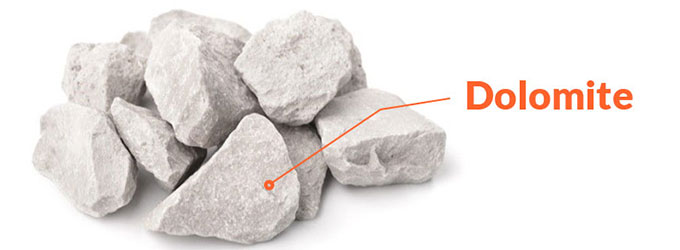Are you confused a lot about dolomite? What is dolomite? Is it a mineral or a rock? Where is it found? Is it the same as limestone or marble? Is it harmful? Read this blog to find your answers in 2 minutes.
What is Dolomite?
Dolomite is a rock as well as a mineral. It is not an ore of any metal.
Dolomite has two meanings in geosciences (a bit like "serpentine" or "clay"):
- Geologists think that dolomite is an anhydrous carbonate mineral, containing 60% calcium carbonate and 40% magnesium carbonate. However, it may also contain purities like iron, manganese, and lead.
- Rock mineralogy uses dolomite as a sedimentary rock that is dominated by the mineral dolomite. To avoid this ambiguity, the term “dolostone” is preferable. Dolomite rock is composed of dolomite mineral, but also contains impurities such as Calcite, Quartz, and feldspar.
Dolomite properties
- Dolomite formula: CaMg(CO3)2
- Composition: Calcium magnesium carbonate. Small amounts of iron and manganese are sometimes also present.
- Associated minerals: Quartz, fluorspar, galena, chalcopyrite, pyrite, magnesite, clay, gypsum, barite, feldspar, sphalerite, etc.
- Dolomite color: Pure ones are white; iron-containing gray; weathered brown.Colorless, white (pure ones), gray (iron-containing), peach, pink (manganese-containing), and brown (weathered). Yellow, green, red, black, and blue dolomite are rarely found.
- Dolomite luster: Vitreous, pearly
- Dolomite hardness: 3.5 to 4 (Very soft, but harder than marble and limestone)
- Dolomite specific gravity: 2.8 - 3.0
- Dolomite crystal: Trigonal system. The crystal is rhombohedral, the crystal plane is often curved into a saddle shape, and polycrystalline twins are common. Aggregates are usually granular.
- Soluble or not: Slightly soluble.
- Dolomite cost: In most cases, it is cheaper than marble, quartz, and granite (in some cases).
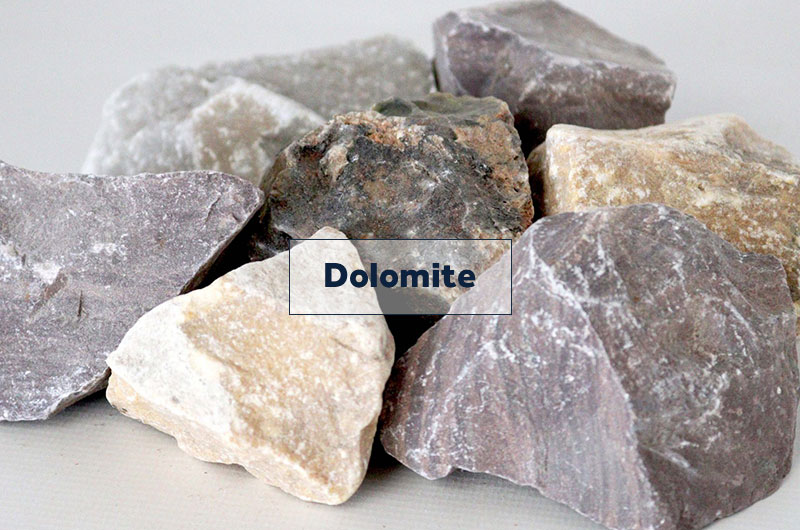
Dolomite is very economically valuable. As its properties are similar to those of limestone, in places where limestone is unavailable or more costly, we often process dolomite stone to produce most building materials, such as road base materials, concrete and asphalt aggregates, ballast, cement, etc.
Of course, we also use dolomite as a source of magnesium oxide (MgO), agricultural fertilizers, glasses, bricks, and ceramics.
Where is dolomite found?
Dolomite rock (dolostone) originates in the same sedimentary environment as limestone - a warm, shallow, seawater environment.
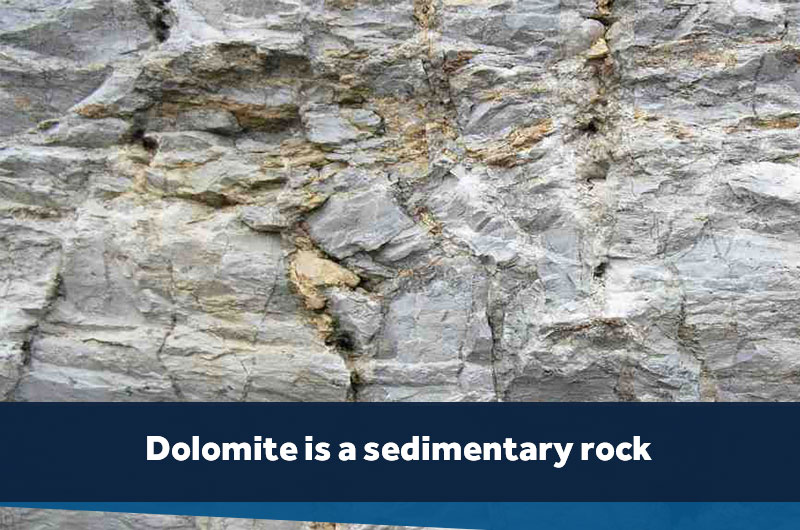
Most dolomite-bearing rocks were originally deposited as calcium carbonate muds. They accumulated as shell debris, fecal material, coral fragments, and carbonate precipitates.
Dolomite rock is thought to form by the post-depositional alteration of lime mud and limestone by magnesium-rich groundwater.
Where to find dolomite? Dolomite rock is found throughout the world. The most famous quarries are located in the Midwestern United States; Ontario, Canada; Switzerland; Pamplona, Spain, and Mexico.
In addition, there is a famous mountain called The Dolomites in Italy, which is made of dolomite rock.
Is dolomite limestone?
Many people think that dolomite and limestone are very similar, as they are both sedimentary carbonate rocks with similar appearances and uses. So, is dolomite limestone?
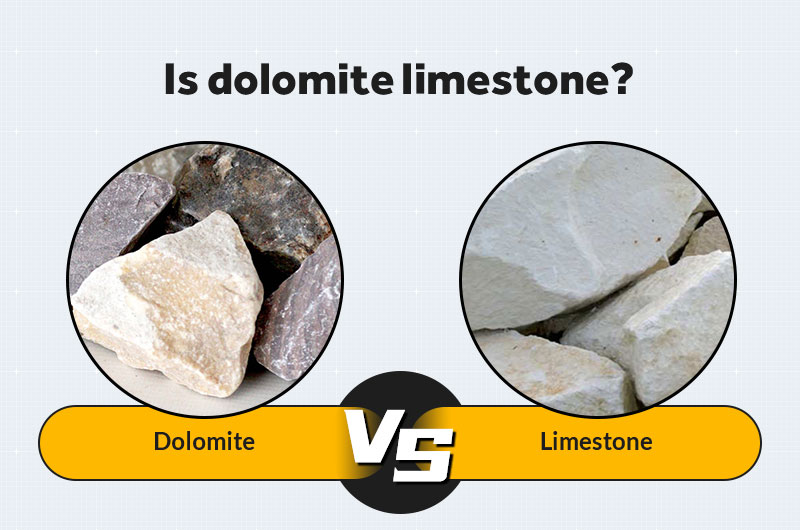
The answer is NO.
Dolomite rock (dolostone) is often found along with limestone. There are several transitional types of rocks between them. The geological process of conversion of calcite to dolomite is dolomitization. Any intermediate product is called dolomitic limestone. At this point, dolomite is a type of limestone.
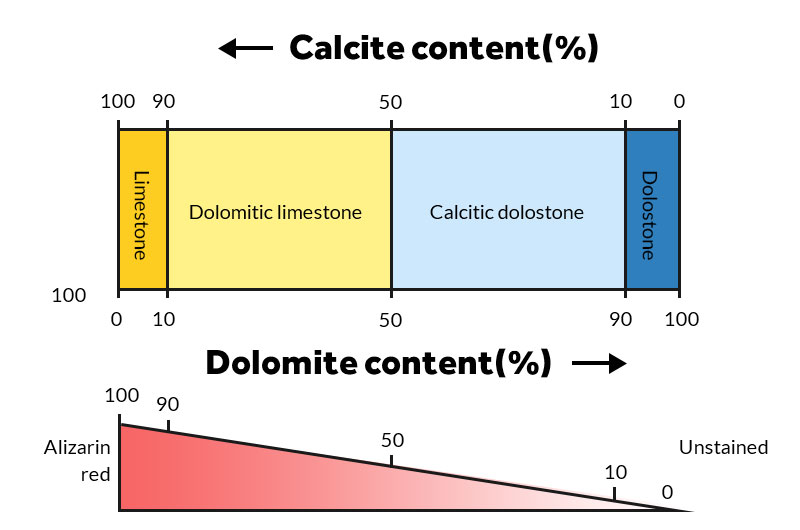
However, dolomite differs from limestone.
- The amount of magnesium contained. Dolomite mineral is a calcium magnesium carbonate mineral (dolomite) with a calcite content of less than 5%. However, limestone is a calcium carbonate mineral made of calcinate (CaCO3).
- Dolomite is harderthan limestone (2-4 on Mohs hardness).
- Sand, clay and silt are commonly found in limestone as impurities but not quite common in dolomite.
- Dolomite will not bubble when introduced to acid, while limestone readily reacts with hydrochloric acid to produce CO2.
- Unlike limestone, dolomite is insoluble in water, resistant to various external damage, and has a shiny surface.
- Dolomite is cheaper than limestone.
Is dolomite marble?
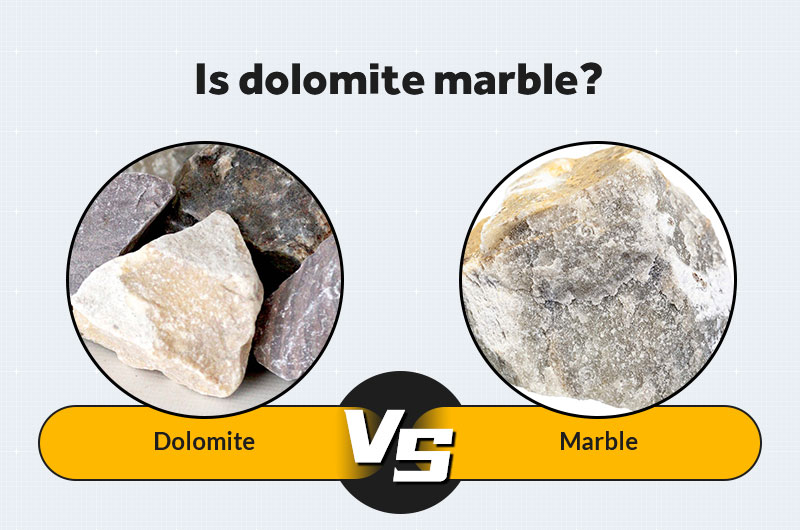
No, dolomite rock is different from marble.
Dolomite is a sedimentary rock that can resemble marble but is stronger.
Marble is a metamorphic rock, also called recrystallized limestone. It contains large and rough crystals (visible to the naked eye). Some marbles contain dolomite and are called dolomitic marbles.
However, the construction industry thinks that marble includes a variety of stones including limestone, dolomite, and serpentine. It is a natural architectural decorative stone to make dolomite countertops, windowsills, and indoor floors.
Is dolomite harmful?
Two common products of dolomite are dolomite sand and dolomite powder, which are made by sand making process and powder grinding process respectively. These products are so versatile that they even appear as supplements. So, are they safe?
1. Is dolomite sand safe?
The Philippines has covered Manila Bay beaches with dolomite sand to “whiten the beach.” This dolomite sand project was met with great controversy. So, is beautiful dolomite sand a good substitute for beach sand?
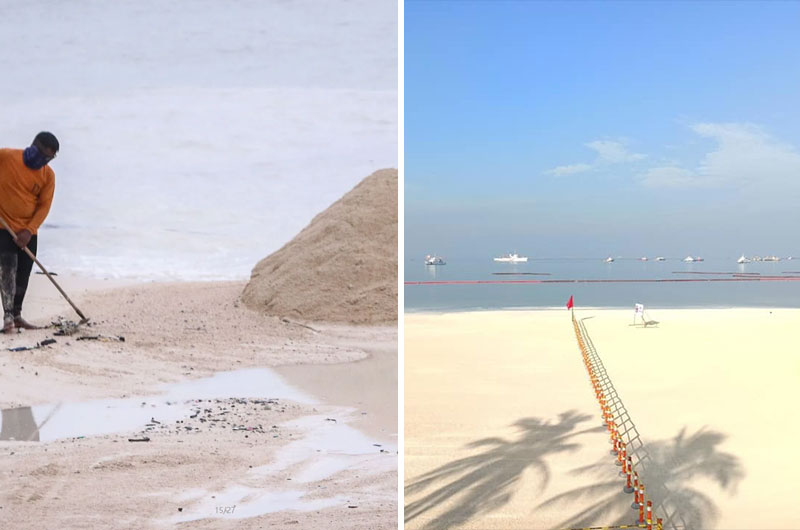
On the surface, the dolomite sand beach may not be a bad idea, but it masks the pollution problem of the coastline and brings environmental problems.
Why dolomite sand is bad? One reason is that dolomite sand may be fine for a few years at the beach, but it is chemically unstable and splits easily. After a few seasons of wear, it softens, dissolves, and re-settles to form a crust.
However, beach sand is natural quartz sand with a hardness of 7 and is relatively well-rounded. It is insoluble and stable, so it can be used for a long time.
The other reason is that dolomite sand is unsafe for marine life. It is considered the most common water pollutant. This move by the Philippines will disturb the habitats of marine animals and plants by burying them, lowering the oxygen in the seawater, and blocking their access to sunlight.
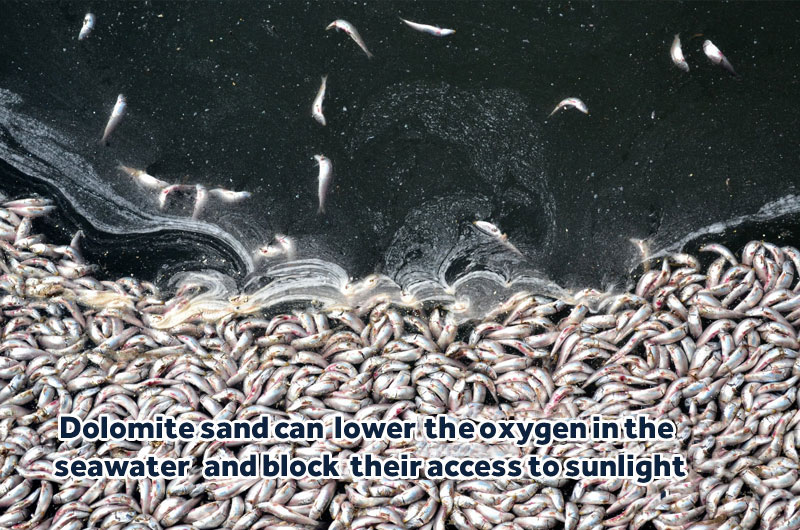
2. Is dolomite harmful to humans?
Dolomite powder is harmful to human health. That's because it contains varying degrees of crystalline silica that can cause lung damage or cancer when it is breathed in. Besides, the dolomite powder can also irritate the skin and eyes.
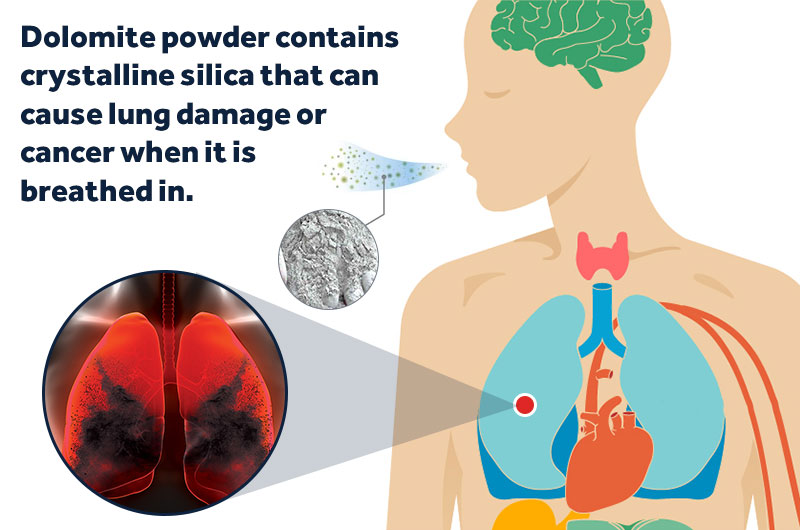
In addition, dolomite may contain deadlyasbestos and heavy metals like aluminum, arsenic, lead, mercury, and nickel.
Therefore, you had better not take a dolomite powder supplement and choose a safer calcium or magnesium supplement.
Conclusion
Although dolomite has certain risks, its economic value is greater. Whether it is crushed dolomite block, ground dolomite powder, or dolomite sand, it can replace limestone to produce building materials, cement, fertilizers, glasses, ceramics, etc.


